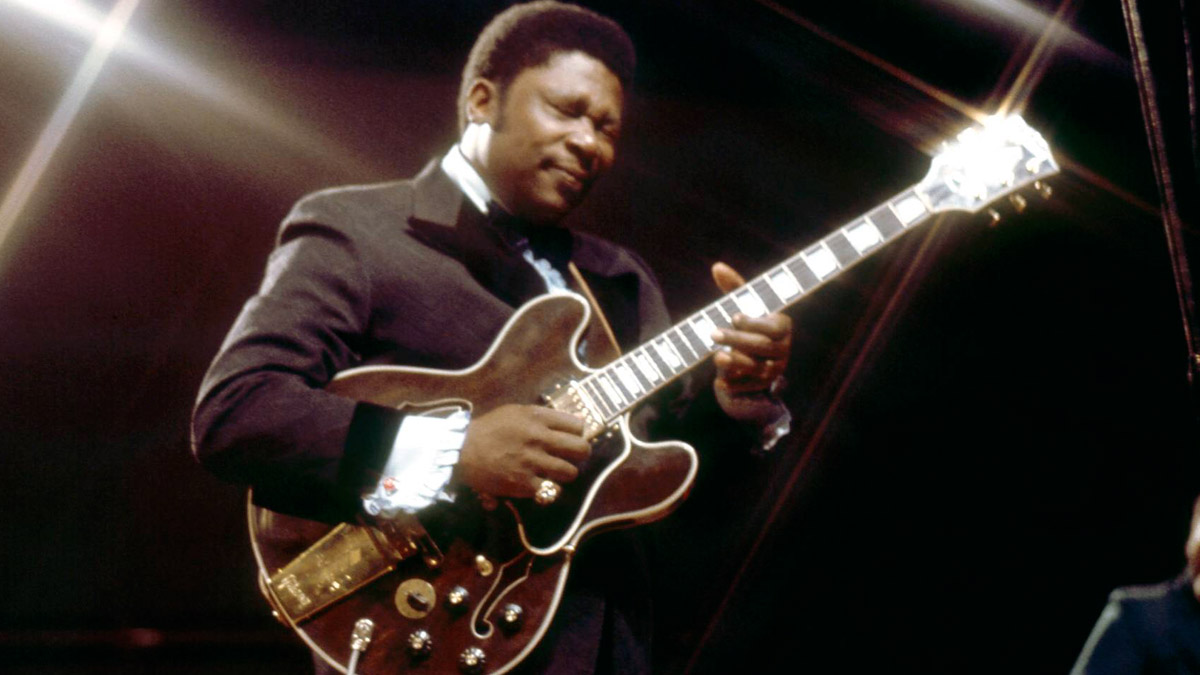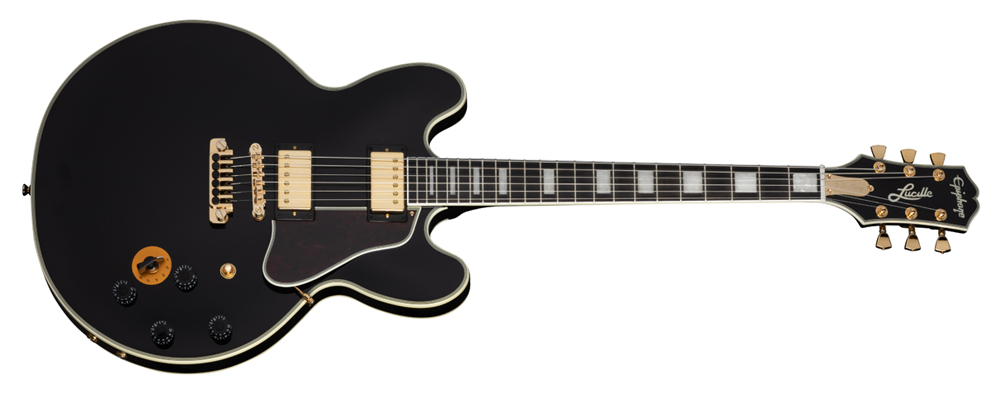The secrets behind B.B. King’s guitar tone on The Thrill Is Gone
How the King of the Blues made Lucille howl at the Cook County Jail

I recently read an online article that described B.B. King’s tone as “warm and mellow”. To me, that was the equivalent of saying Eddie Van Halen played great power chords, as it only tells a very small fraction of the story and almost completely ignores the more important details.
Yes, B.B. King’s tone could sometimes be “warm” and “mellow”, but more often it was bright, brilliant, aggressive, percussive, voice-like, honking and dynamic. For example, listen to any version of King’s best-known song, The Thrill Is Gone – warm and mellow are probably the last adjectives that come to mind when one hears his punchy, metallic, biting tone.
Many blues guitar fans consider the version of The Thrill Is Gone that King recorded September 10, 1970, at Cook County Jail in Chicago as one of his best performances of the song.
The rig King used at that gig consisted of a mid-'60s Gibson ES-355TD-SV with a stereo Varitone circuit and Maestro Vibrola tailpiece (with the vibrato arm removed) and a Gibson LP-1 Les Paul preamp head with an LP-2 power amp/speaker cabinet – an all-solid state amp made for Gibson at the Standel factory in El Monte, California.
Previously, King was seen using Fender tube amps, but once he started using Gibson solid-state amps, they became his favored choice, as he progressed to Gibson’s tube/solid state hybrid SG Systems amps (also produced by Standel) next before settling upon his all-time favorite, the Gibson-produced Lab Series L-5 solid state combo.
GUITAR: c. mid-'60s Gibson ES-355TD-SV (both pickups), Bridge Volume: 10, Neck Volume: 8, Bridge Tone: 10, Neck Tone: 10, Varitone: 2
AMP: 1970 Gibson Les Paul LP-1 head (bridge pickup into Normal channel, Hi impedance input, Volume: 8, Presence: 7, Bass: 3, Treble: 6, X Over: 250Hz; neck pickup into Effects channel, Hi impedance input, Volume: 8, Presence: 7, Bass: 3, Treble: 6, X Over: 250Hz, Tremolo: 0, Vibrato: 0, Rate: 0, Reverb: 2) into Gibson Les Paul LP-2 power amp/speaker cabinet with four Eminence 12-inch speakers (model unknown) and two University 10-inch treble horns
EFFECTS: None
STRINGS/TUNING: Unknown; later in the '70s he used Gibson 740XL .009, .011, .014, .022, .030, .036/standard
PICK: Unknown standard 351-shape (teardrop) heavy
King needed ample volume to perform onstage with as much clean headroom as possible, which is why he preferred solid-state amps. He also liked the quick, percussive attack and the cut of the treble frequencies.
King also made very effective use of his Gibson 355’s Varitone circuit, particularly on this song. Here he used the #2 setting with both pickups engaged. He plugged the guitar in the amp using a stereo Y cord, which sent the signal from each pickup to a separate channel. King was a master of dialing in different tones and textures by adjusting the guitar’s volume and tone controls in conjunction with various Varitone settings.
Get The Pick Newsletter
All the latest guitar news, interviews, lessons, reviews, deals and more, direct to your inbox!
Another important element of King’s tone is his impeccable phrasing, particularly his forceful attack employing a heavy pick and hummingbird-like left hand vibrato. As Billy Gibbons has often mentioned, King also used lighter-gauge strings than most of his contemporaries, preferring .009s for his high E string throughout the '70s and '80s, although he later switched to .010s with heavy bottom strings.
Get the sound, cheap!

Epiphone B.B. King Lucille

Fender Champion 100 2x12
Tone Tip: Use both pickups and the #2 Varitone setting on the Lucille guitar just like B.B. did, and dial back the amp’s bass to emphasize midrange honk and treble cut.
Chris is the co-author of Eruption - Conversations with Eddie Van Halen. He is a 40-year music industry veteran who started at Boardwalk Entertainment (Joan Jett, Night Ranger) and Roland US before becoming a guitar journalist in 1991. He has interviewed more than 600 artists, written more than 1,400 product reviews and contributed to Jeff Beck’s Beck 01: Hot Rods and Rock & Roll and Eric Clapton’s Six String Stories.
“I was writing songs from eight years old, but once I got a guitar I began to deeply identify with music… building an arsenal of influences”: How Lea Thomas uses guitars her dad built to conjure a magic synthesis of folk, pop and the ethereal
“I liked that they were the underdogs. It was not the mainstream guitar. It was something that was hard to find”: Vox guitars deserve a second look – just ask L.A. Witch’s Sade Sanchez, who’s teaming hers with ugly pedals for nouveau garage rock thrills











